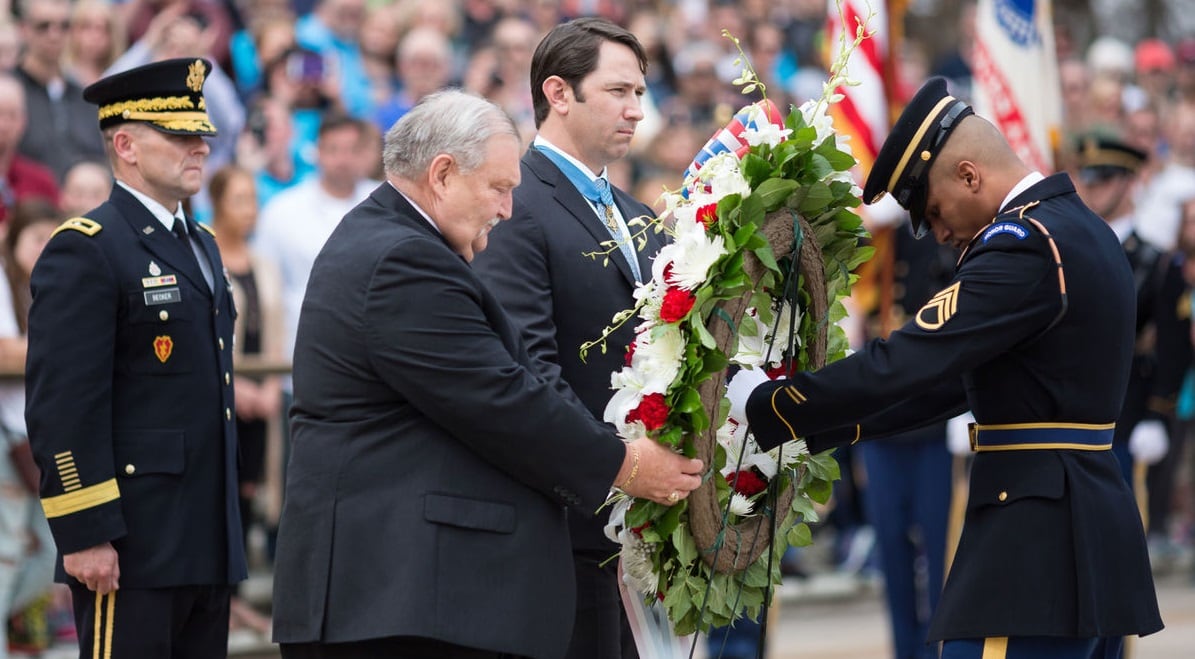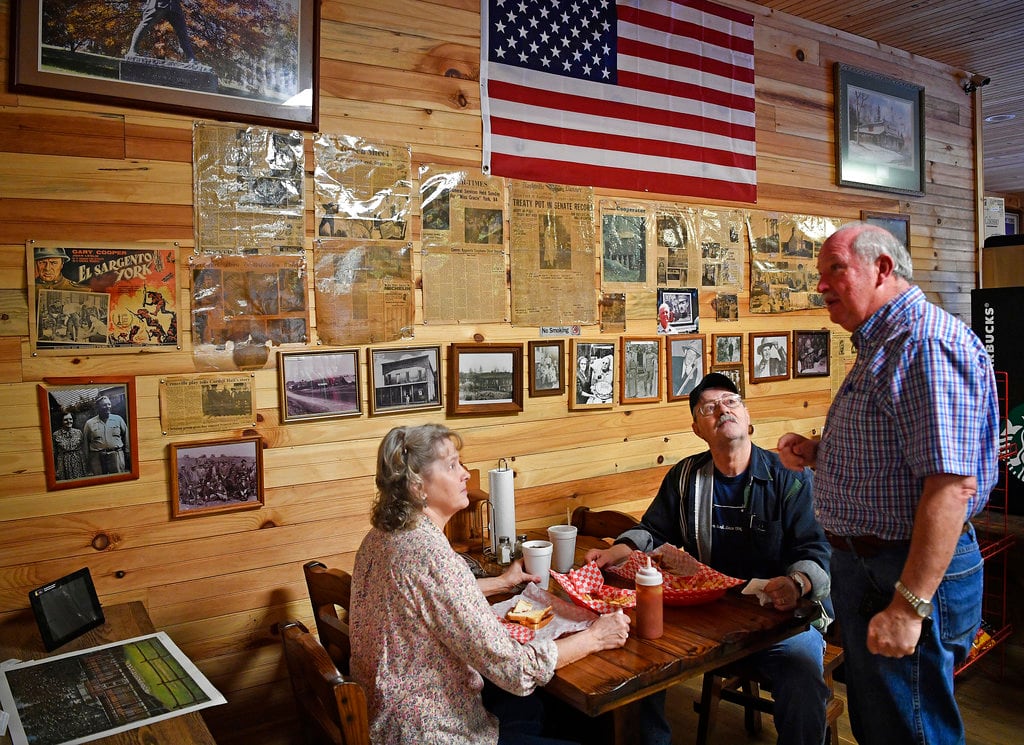PALL MALL, Tenn. — Until he was old enough to buy and trade his own comic books, Gerald York thought his grandfather was just an ordinary man.
Alvin C. York — Tennessee’s most famed war hero and among the most recognized Americans from World War I — was “always jovial, always fun.”
Today, his name is known worldwide and is emblazoned across the state.
RELATED

York’s story starts and ends deep in the hills of northeast Tennessee, where his family farm still exists and his grave draws the interest of history buffs. It’s not far from the two-lane highway that leads to the state park — both carry his name.
This year, his war story will be told often as the centennial of the end of World War I comes later this year, and the anniversary of the battle that earned Sgt. Alvin York his fame.
His story, in a nutshell: In October 1918, York charged a hill alone, killed 25 deeply entrenched but fatigued German soldiers and captured 132 others.
Now, his grandson, Gerald York, 70, will travel back to northeastern France this October for the 100th anniversary of the battle of Chatel-Chéhéry, the tiny town where his grandfather remains a celebrity.

Almost everything there, too, has some association with York’s narrative.
His family, though, remembers a much more ordinary man, not necessarily an icon of bravery and heroism.
His legacy, for those who knew him best, wasn’t forged on the field of battle. Instead it is near his hometown in the walls of the only state-funded and managed public high school — it, too, carries York’s name — in Fentress County, one of the most rural and poor counties in the state.
“He said the greatest battle he had was not in France, but was in Fentress County building a high school,” Gerald York said. “People did not want a high school. They thought, why did their kids need education. They farmed. They needed them to farm.”
That storyline is echoed among many who have lived in Fentress County, where the opioid epidemic rages and unemployment still ranks higher than most Tennessee counties.
“There’s nothing much here if you’re not a teacher, a doctor or work at a bank,” said Phil Brannon, superintendent of York Institute for three decades, the high school York established after his tour in Europe.
“He realized what the mountain people were missing out on,” Brannon said.
Alvin York established York Institute in Jamestown in 1926, and later turned it over to the state in 1937. With barely a third-grade education himself, York was self-taught, and got the school running almost entirely on his own, Gerald York said.
“He bought the buses. He paid the drivers. He bought the gas,” York said. “He paid the teachers, all with money he raised.”
His fundraising took him just about everywhere, including up and down the East Coast, Brannon said.
But those in his hometown eventually put up resistance to York and his leadership, questioning how he could run a school without an education himself. Amid the turmoil, he turned the school over to the state after local residents created a “movement” to oust York, his grandson said.
“There are probably still some hard feelings in the area over that,” York said.
The school still operates today on a portion of the 400 acres that made up the campus. An elementary school also carrying his name stands on 40 acres that came along as part of the land deal.
York’s great-niece, Janet Patton, who runs an old country store bearing York’s name, also wonders what the state of education would have been without his success.
“I don’t even know if we’d even had a high school if he hadn’t done it,” she said.
York rarely talked about his time in France during World War I.
Everyone else knew what he had done.
He received a Medal of Honor for his actions in France. There was a ticker tape parade for him in New York.
A movie starring Gary Cooper came out in 1941, which won two Oscars. Just this year, the U.S. Treasury minted a new $1 coin featuring York’s chiseled jawline and heavy mustache.
He didn’t talk about his combat experience until his dying days, Gerald York said.
York didn’t know anything about his grandfather’s heroism until he was a boy searching for new comics in Nashville, shopping with a two-party check his grandfather had given him instead of the usual $1 bill.
The shop owner said he wouldn’t take it until he looked at it and saw the signature, instantly knowing who it belonged to.
“He said, ‘I’ll take that check then,’ ” York said.
The story his grandfather was so known for wasn’t something York learned until fifth grade, when his teacher asked him to read the encyclopedia passage on his grandfather to his classmates.
“I guess that’s the first time I realized that other than me and my family, that other folks knew my grandfather,” he said.
York followed in his grandfather’s footsteps, serving 31 years in the military, which began at the urging of those who knew his grandfather’s name.
Now retired, York has become the face of the family, and the living legacy of his grandfather. He travels, maintains the family farm and helps run the Sgt. York Patriotic Foundation.
Another hundred years from now, it’s hard to say what the legacy will be. But many hope York Institute will remain part of it.
”(York Institute) is a living example of veterans. It’s what they represent,” Brannon said.
___
Information from: The Tennessean
